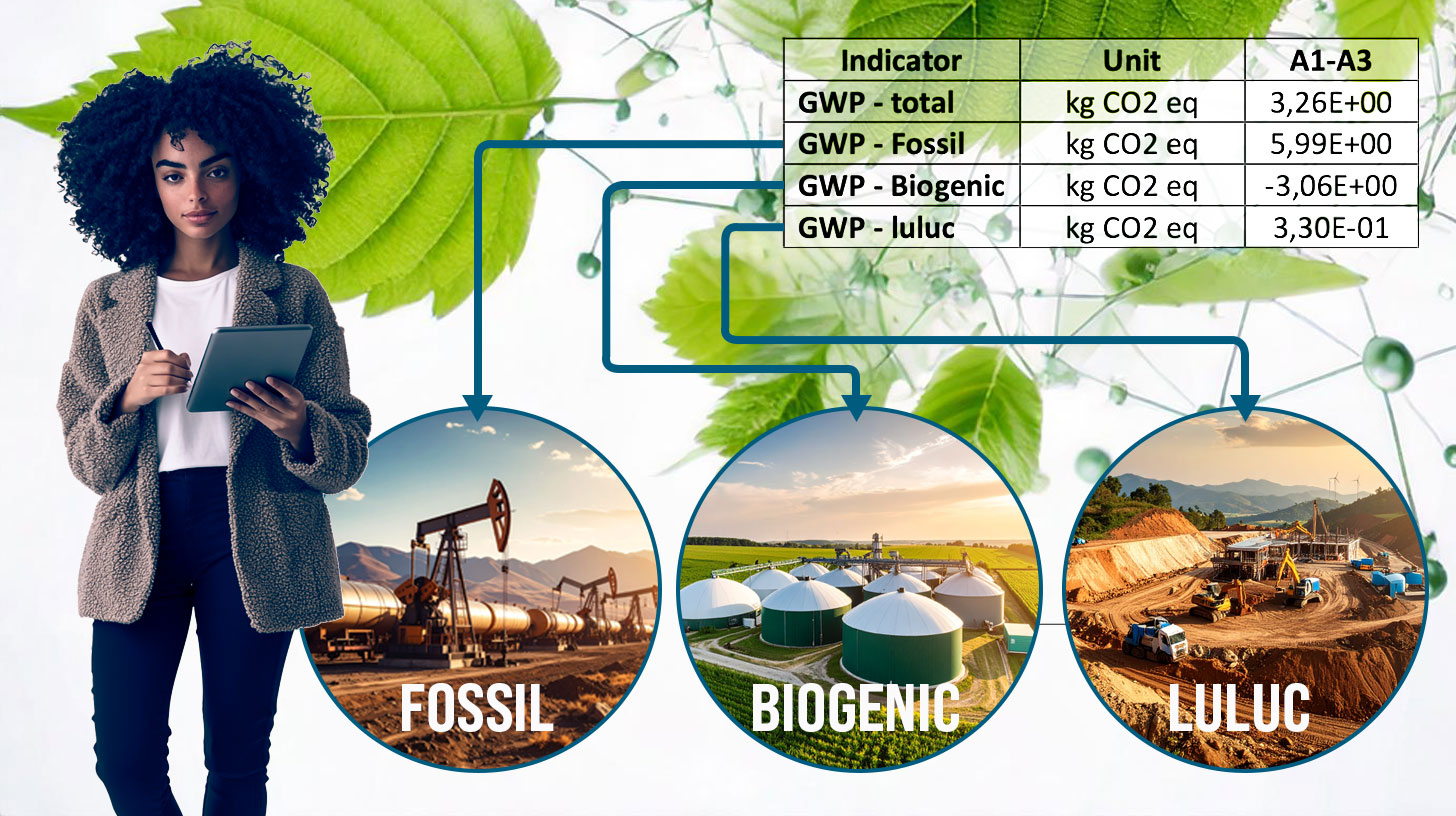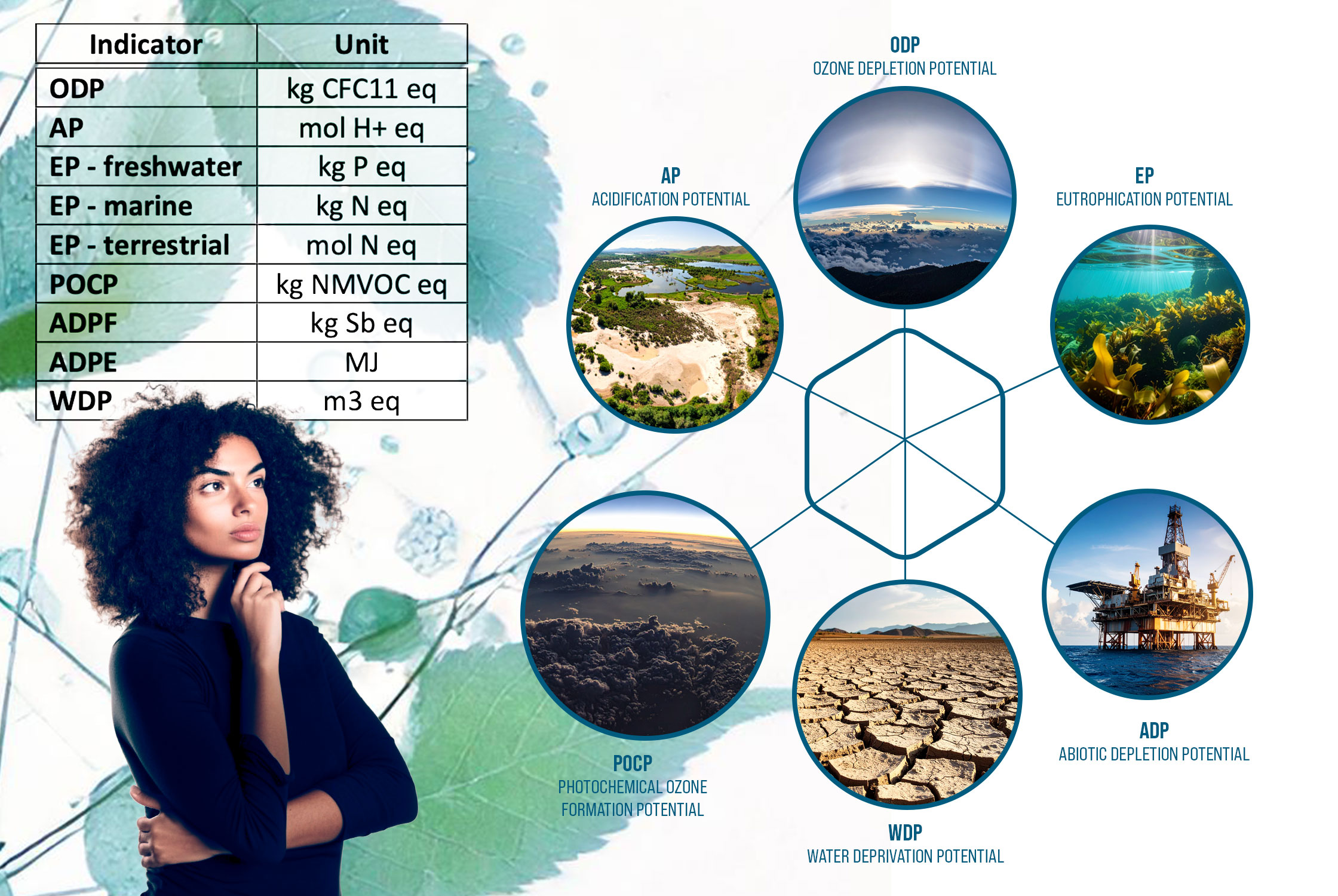
June 11, 2025
A PRACTICAL GUIDE TO EPD
EPD FOR THE INQUISITIVE, DILIGENT AND RESOLUTE: WHAT TO READ AND WHY IT IS IMPORTANT TO KNOW
In previous articles, we had listed and explained the priority content in an EPD, to help the A&D community and project professionals make mindful decisions when selecting products.
An EPD is truly a data-rich document, containing valuable information worth delving into, not only for the curious and resolute who want to enhance their sustainable specification, but for anyone who wishes to improve their knowledge base.
The Elements of Total GWP
The Total GWP (Global Warming Potential) is an indicator that measures a product’s impact on the greenhouse effect, also known as its carbon footprint.
The Total GWP is divided into 3 subcategories:
- Fossil: takes into account the emissions related to the combustion or oxidation of fossil fuels.
- Biogenic: takes into account the emissions from biomass. It is usually negative because it considers the amount of CO2 taken out of the atmosphere during biomass growth.
- Luluc: takes into account the emissions related to land use and land use change. The acronym Luluc stands for Locally Unwanted Land Use.

CO2 Yes, but There is More!
By convention, CO2 is the reference gas used for the calculations of GWP:
To compare the climate impact of the different greenhouse gases, their warming potential is calculated relative to carbon dioxide (CO2 ), using a unit of measurement expressed as CO2eq (equivalent). CO2 was chosen as the reference gas because it is the main greenhouse gas responsible for most of the Earth’s warming. In an EPD, the GWP of a product is quantified and expressed in kg CO2 eq.
This is a simplification: CO2 is perhaps the most relevant variable, and certainly the best known.
What Other Factors Indicate on an EPD?
The various metrics shown are used to determine the overall environmental impact of a product or service.
- Ozone Depletion Potential (ODP): an index that measures the potential of a substance to damage the stratospheric ozone layer.
- Acidification Potential (AP): an indicator used to assess the environmental impact of a product in terms of acidification of the environment with possible damage to aquatic and terrestrial ecosystems.
- Eutrophication Potential (EP): measures the ability of a product or activity to contribute to excess nutrients (nitrogen and phosphorus) in aquatic ecosystems, leading to phenomena such as algal blooms, oxygen deficiency and degradation of water quality.
- Photochemical Ozone Formation Potential (POCP): measures the ability of a product to contribute to the formation of ground-level ozone, a secondary pollutant that causes photochemical smog and damage to health and ecosystems.
- Abiotic Depletion Potential (ADP): an indicator used to quantify the impact of depleting non-renewable resources.
- Water Deprivation Potential (WDP): an indicator that provides information on the environmental impact of water use as a function of availability in different geographical locations.

These are interesting in-depth factors that deserve to be understood; difficult to master for most, we aim to bridge this gap with our Blog, in the spirit of completeness!
CONTACT US!
"*" indicates required fields